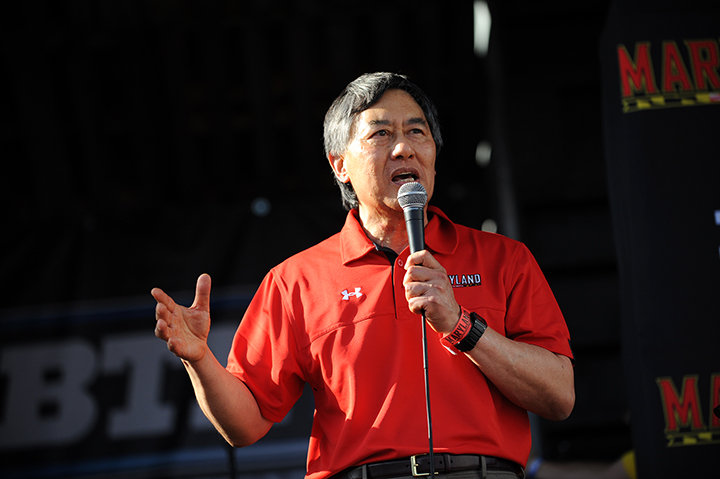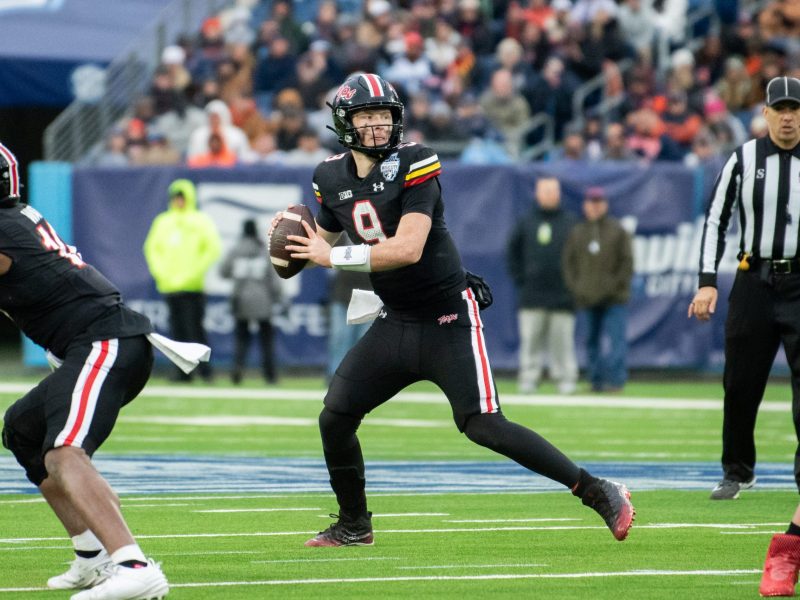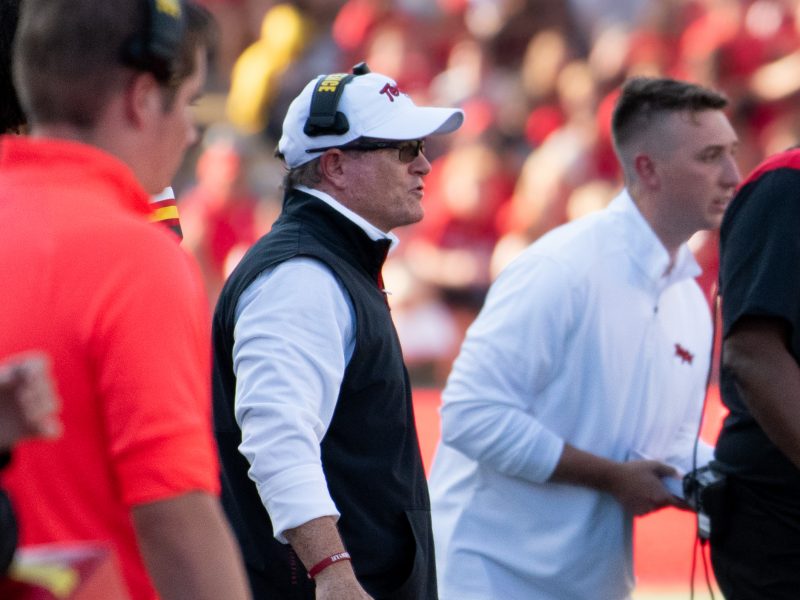University of Maryland President Wallace Loh squashed a proposal to overhaul the school’s sports medicine policies in 2017, a year before school trainers failed to properly treat Jordan McNair when he suffered heatstroke at a football team workout, The Washington Post reported Thursday.
At a press conference Tuesday, Loh said the university accepts “legal and moral responsibility” for McNair’s death from heatstroke, which has a 100 percent survival rate when properly treated.
In a memo to Loh in May 2017, then-athletic director Kevin Anderson outlined changes he wanted to make to the school’s health care of athletes, the Post reported. Among the stipulations was that athletic trainers should report to the University of Maryland Medical School, housed at the University of Maryland, Baltimore, rather than be employed by this university.
Outside physicians currently supervise the university’s athletic training staff, but those trainers are employed by the athletic department. While the NCAA doesn’t regulate this organizational structure, it does suggest schools maintain autonomy between the athletic department and medical personnel, which the proposed changes would have established.
Loh rejected the proposal because he wanted the school to still be able to make medical personnel decisions, according to the Post.
“I have spoken to Dr. Loh and he will not concede hiring or firing to another institution,” Loh’s chief of staff, Michele Eastman, wrote to Anderson in an email Aug. 29, 2017, the Post reported.
Anderson began a six-month sabbatical in October 2017 and resigned in April. Reached by the Post, he declined to comment.
In a statement Thursday, a university spokesperson said the current model allows the school to make “necessary personnel decisions, as we did recently” by putting trainers Steve Nordwall and Wes Robinson on administrative leave.
When McNair suffered heatstroke at an organized team workout May 29, trainers didn’t properly diagnose him, take his vital signs or follow the university’s emergency action plan, Loh and athletic director Damon Evans said at The Hotel at The University of Maryland on Tuesday.
The system Board of Regents will meet Friday to discuss the fallout from McNair’s death, including personnel decisions.
ESPN reported last week that Robinson instructed McNair’s teammates to “drag his ass across the field” when he could no longer control his body. Several players told ESPN that coach DJ Durkin, who is also on administrative leave, instilled a toxic culture in the football program where players were pushed beyond their physical limits.
Chad Asplund, president of the American Medical Society for Sports Medicine, told the Post that in an environment where trainers report to the athletic department, they may feel pressure to acquiesce to what they believe the coaches want.
“The coach may need a player for a big game, but they have an injury where it’s not safe. If you report directly to the football staff or someone in athletics, you might worry about being fired if you pull a kid out,” Asplund told the Post. “You may feel coerced to [play] a kid even if he’s not healthy.”
“Consistent with best practices, our coaches do not have direct responsibility for the hiring or supervision of any member of the sports medicine staff,” a university spokesperson said in a statement.
In a statement Friday, Dr. Andy Pollak, chair of the orthopedics department at the University of Maryland Medical School, said you “cannot draw a line between organizational structure and the death of student-athlete Jordan McNair.”
“We can and will work with the university to implement changes that improve the environment and conditions where student-athletes compete and how athletic trainers provide care,” Pollak’s statement continued.
Maryland’s trainers are currently supervised by Valerie Cothran, a doctor at the Baltimore-based University of Maryland Medical School, and Nordwall, who reports to David Klossner, this university’s sports performance director, according to the Post.
Nordwall, Klossner, Cothran and multiple other team physicians did not respond to a request for comment Friday.
An NCAA bylaw adopted in 2016 says institutions “shall establish an administrative structure that provides independent medical care and affirms the unchallengeable autonomous authority of primary athletics health care providers.”
A university spokesperson called the school’s current model “widely adopted.”
The athletic department began to consider adopting the independent model in 2016. Officials contacted other universities like Ohio State, Iowa and Pitt, which have greater separation between their athletic departments and training staffs, the Post reported.
But Loh balked at the idea. Eastman expressed her confusion with the proposal in an email to Anderson on May 30, 2017, according to the Post.
“I just read the memo and do not understand WHY you are moving this (outsourcing it?),” Eastman wrote. “In addition, I don’t know what the move means.”



